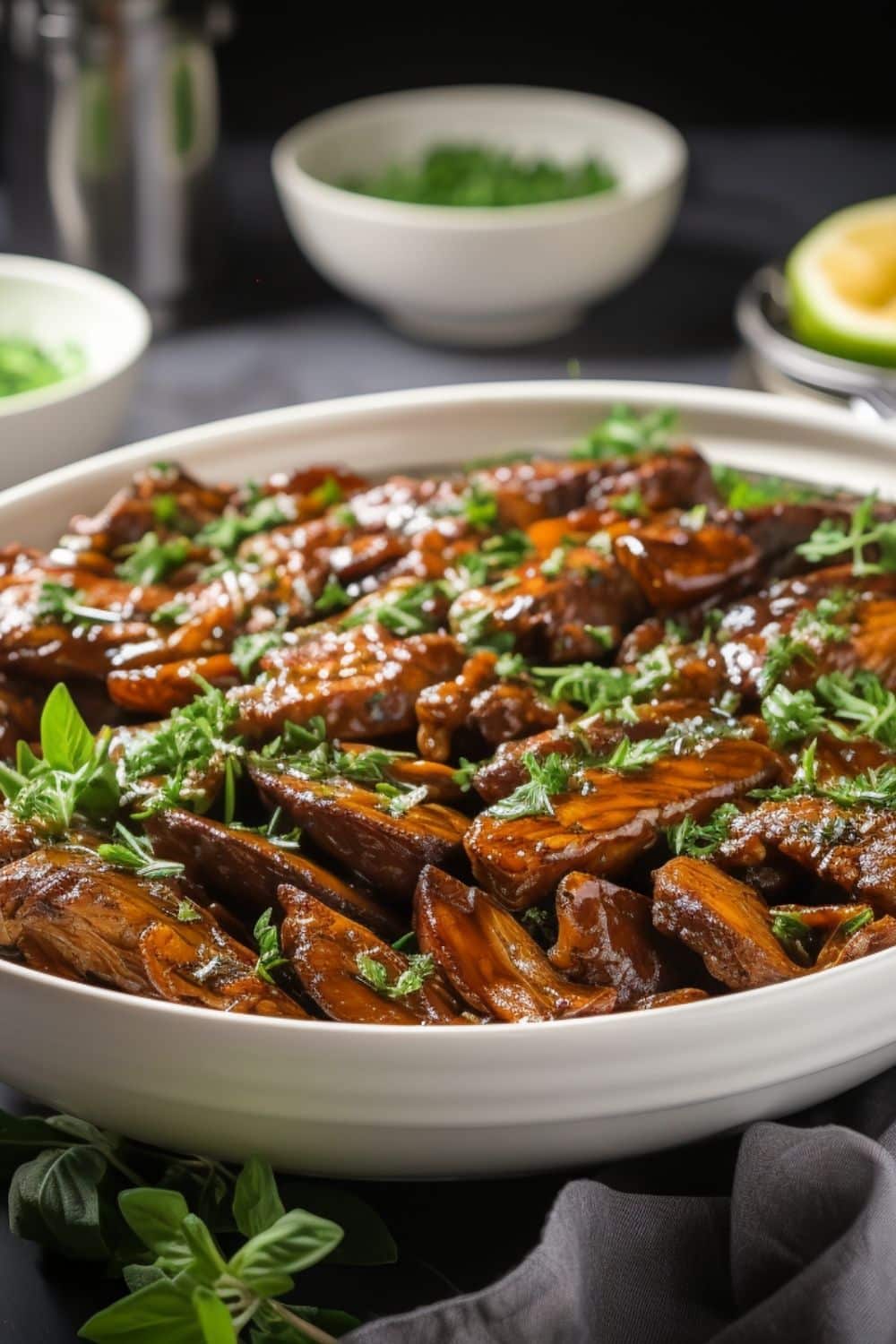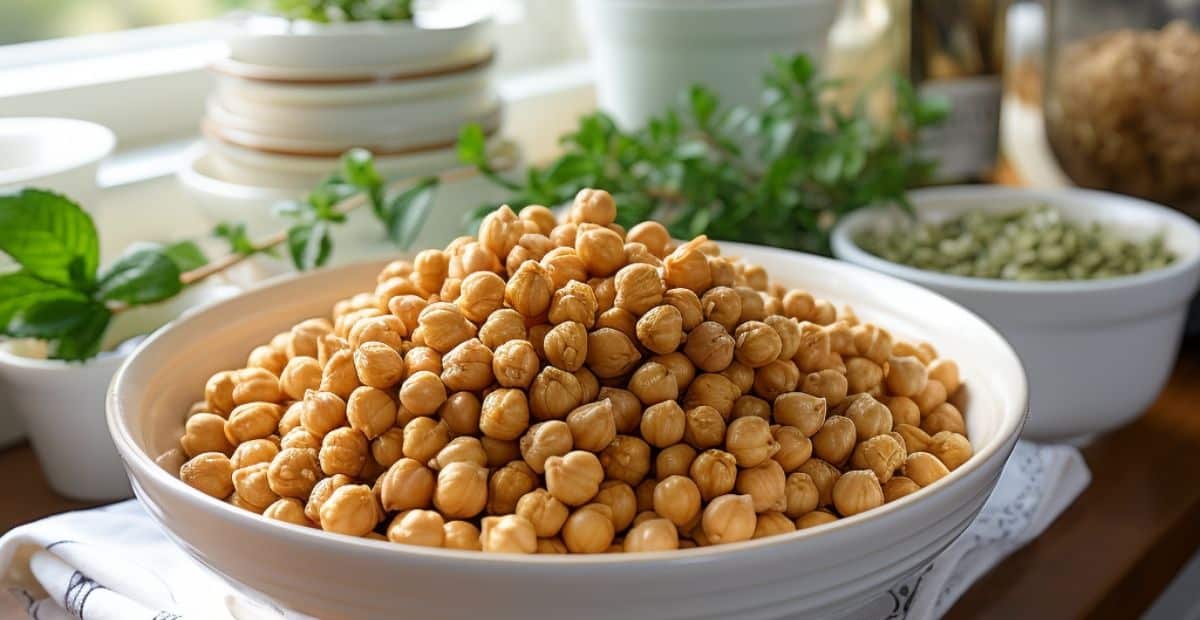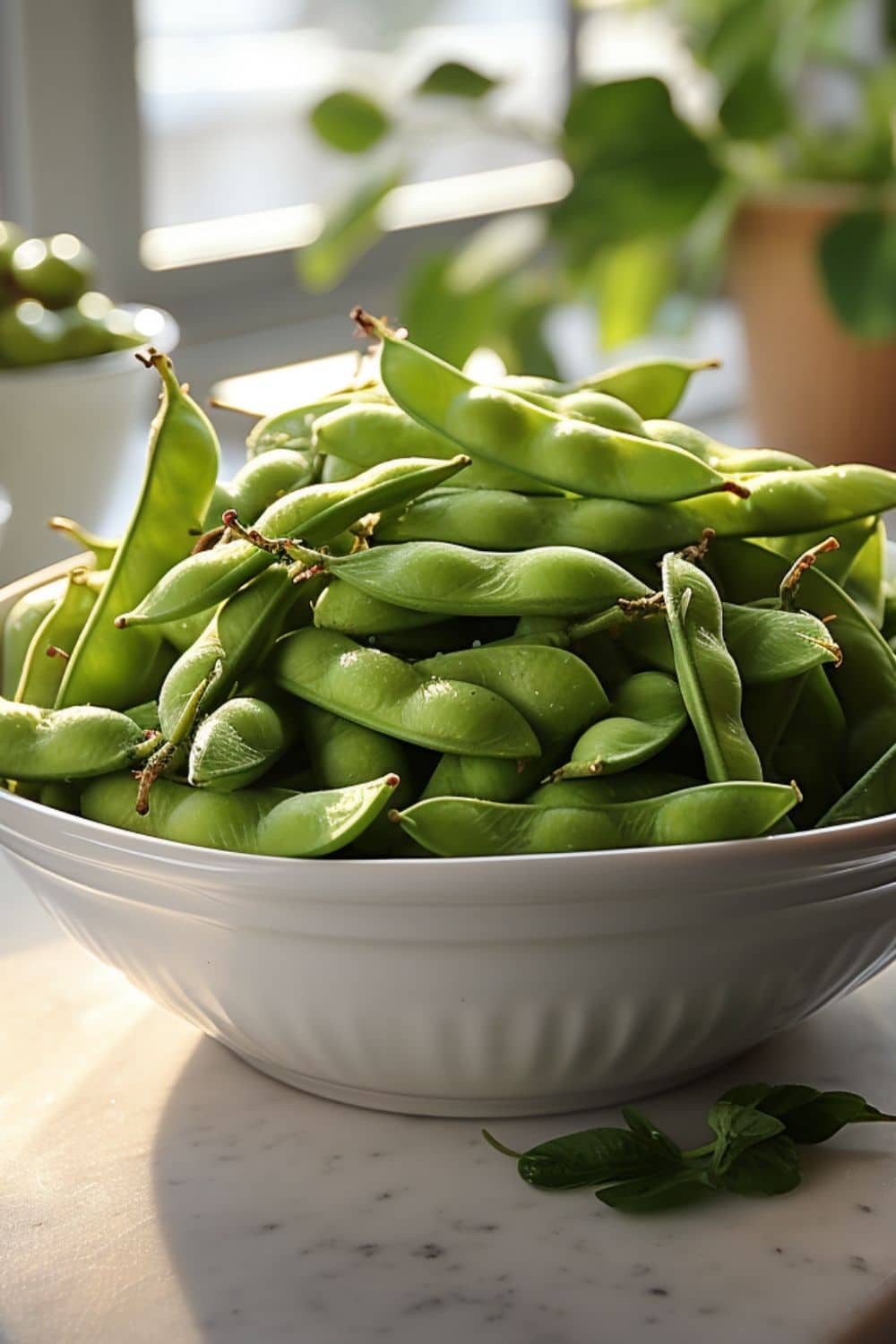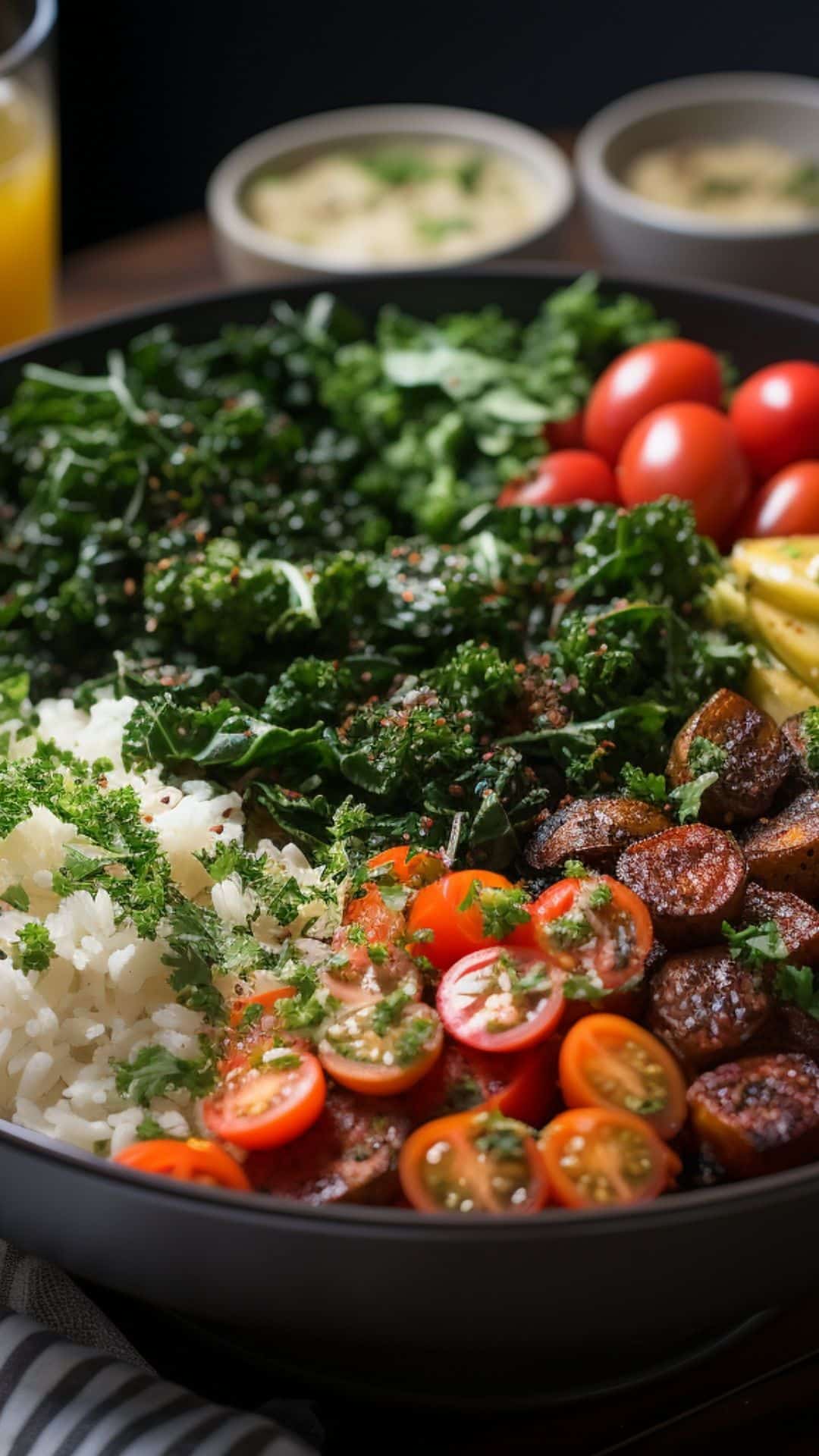Dabbling in plant-based eating or seeking meatless protein sources? I got you! Today, I am sharing what I refer to as my personal ultimate guide to plant-based protein sources for everyday living.

Plant-based fam, are you fed up with that age-old question, ‘But where do you get your protein?’ when you’re on a vegan or flexitarian diet? I’ve got answers for days because I walk the walk and talk the talk.
Whether you’re a lifelong vegan, a ‘flexitarian,’ or just dipping your toes into plant-based waters, this ultimate guide is your protein bible!
Table of Contents
Meatless Protein Sources With A Dash of Ignorance
I’ve relied on plant-based protein sources for over a decade, yet stepping into a family gathering is still challenging. The concept of a meatless diet is foreign, and they treat me like it is a crime not to eat meat.
Trust me, the irony isn’t lost on me, especially when I host gatherings and cater to everyone’s palate. So, after years of frustration and hauling my own food, I’ve decided to skip these culinary minefields altogether.
If you are in similar settings, this article is your lifeboat or pool floatie to survival. Share it with your well-meaning but clueless family and friends because ignorance is bliss, so train them!
The Carb Factor
Before diving into our scrumptious list of plant-based protein sources, let’s break down this net carbs situation. The carb content in plant foods often gets scrutinized, but that’s a tad unfair.
When you’re munching on your protein-packed plant sourced proteins, some of the carbs they contain are fiber, which our bodies don’t fully absorb.

Subtracting the fiber grams from the total carb grams will give you the net carbs—those are the carbs that actually impact your blood sugar.
Plant-Based Protein Sources
Here’s to your new path in life and many options for protein as you start into meatless protein sources.
1. Leafy Greens Are Mega Plant-Based Options To Consume
Protein Count: Around 1-2 grams per cup
Our list includes leafy greens like spinach, rapini, and kale. Yeah, I know, they’re not protein powerhouses, but don’t underestimate these green bad boys! They’re nutrient-dense and work great alongside other protein-packed foods.
2. Seitan Is One Of The Really Solid Meatless Protein Sources
Protein Count: About 25 grams per 3.5 ounces

Seitan, a.k.a. “wheat meat,” is a chameleon in the kitchen, able to take on various flavors and textures. It’s packed with protein, but beware if you’re gluten-sensitive or celiac—this one’s off-limits.
To be honest, I use seitan a lot; it is one of my favorites, and I will share my recipe in an upcoming post. Bragging Point: My simple recipe received a head chef’s kiss when I shared it with him; he tasted it and asked to use it. It is that good!
3. Tempeh and Tofu
Protein Count: Around 15-20 grams per 3.5 ounces
Tempeh and tofu hail from the soybean family but are like distant cousins in how they’re made. Tempeh brings more fiber to the table, but both are culinary blank canvases waiting for your artistic touch.
4. Chickpeas
Protein Count: 9 grams per 1/2 cup
Call them chickpeas or garbanzo beans—either way, they’re a dual-threat in protein and fiber. And let’s be honest: hummus is basically the peanut butter of the plant world, and who can resist that? Use chickpeas as your hero item of meatless protein sources. You will love their versatility!

My favorite options with chickpeas are to drop them in any soup before serving and my buffalo smash (mmmm)!
5. Lentils
Protein Count: 9 grams per 1/2 cup (cooked)

Little but mighty, lentils are the unsung heroes of versatility. Whether in a hearty stew or a summer salad, or even crushed into burgers or patties, they never disappoint.
6. Cannellini Beans
Protein Count: Roughly 9 grams per 1/2 cup (cooked)
If chickpeas are the peanut butter of the plant world, then cannellini beans are the almond butter—smooth, slightly nutty, and absolutely fabulous in almost anything.
7. Edamame
Protein Count: About 18 grams per 1 cup (cooked)

These young green soybeans are not just for pre-sushi snacking. Make ’em a staple; your muscles will thank you. They are easy to microwave, and when we do, we top them with a healthy fat like extra virgin olive oil, and then we add a dash of sea salt. What a satisfying snack!
Plant-Based Protein Sources Use Homemade Dry Beans: The Cleaner Option
Protein Count: Varies, but generally around 7-10 grams per 1/2 cup (cooked)
Canned beans? Convenient but saltier than a pirate. Opt for home-cooked to steer your own nutritional ship. There is a huge debate about whether canned will be better or worse.
Here’s the thing: rinse them and take the salt off; that helps out a lot. When and if you have time, cook your own dry beans using a pressure cooker; it’s fast and easy. But it is not the end of the world if you do not have time to prepare your own beans.
Consider that these are still better than those prepared and frozen meatless protein sources loaded with garbage ingredients. You are still on the right track using canned beans, which are so inexpensive!
9. Quinoa
This is what we consider one of those awesome meatless protein sources, and yes, they have a carb factor, but we use it as our pasta replacement.
Protein Count: 8 grams per cup (cooked)
Ah, quinoa—the grain that’s hard to pronounce but easy to love. It’s a complete protein, making it a plant-based unicorn.
10. Nuts and Seeds
They are fabulous meatless protein sources and plentiful in different types, so you won’t get bored when transitioning to plant-based protein sources; just keep mixing them up.
Protein Count: Varies, but generally around 5-7 grams per ounce.
Almonds, peanuts, sunflower seeds—you name it—portable protein for when you’re on the go. Our favorite is pepita seeds on a salad.
11. Potato Protein
Did you think that potatoes are plant-based protein sources? Well, think again, but remember, using potatoes as meatless protein sources does not mean frying them; it does mean making them the healthiest way possible and adding on those leafy greens to increase that protein!
Protein Count: Around 2 grams per medium potato.
A surprising entry, but every gram counts, especially when you’re gluten-free.
12. Plant-based Burgers and Other Meatless Protein Sources
Impossible Burger & MorningStar Grillers. Yes, these are plant-based protein sources but are also not the healthiest options. However, if you are seeking meatless protein sources that are easy to prepare and that you can find when you are out, these may be your saviors.
Protein Counts on these plant-based protein sources: Around 19 grams per 4-ounce patty for Impossible Burger; 16 grams per patty for MorningStar Grillers
Convenient, but proceed with caution. These are for those “I can’t even” days, but watch out for the additives.
The Inside Scoop on Impossible Burger Ingredients As Meatless Protein Sources
Let’s decode the Impossible Burger. It’s a protein bomb but also comes with a side of additives like vitamin B12 (good) and bad methylcellulose.
So, delicious but not as “clean” as whole foods, making it not the best choice for plant-based protein sources, yet a viable option if you are dining out and the rest of the menu is meat!
The Budget-Friendly Perks of Plant-Based Protein Sources
Diving into a plant-based diet isn’t just a win for your health and the planet—it’s also a real game-changer for your wallet.

Here’s why making the switch can be budget-friendly:
- Affordable Staples: Beans are incredibly cost-effective compared to meats. You can get enough to last multiple meals for just a few bucks. Now, that’s some great news for plant-based protein sources.
- Shelf-Stable: Stock up on canned beans and legumes without worrying about fridge space. Once opened, they can easily be stored in the fridge, but until then, your pantry does just fine.
- Fewer Grocery Runs: Since many plant-based protein sources are either shelf-stable or frozen, you’ll find yourself making fewer trips to the grocery store, saving both time and gas money.
- DIY Seitan: Making your own seitan is not only simple but far less expensive than buying meat. Plus, stores like Trader Joe’s offer a variety of seasonings to flavor your meatless protein sources, so you can switch it up as often as you like.
- Dining Out for Less: With the rise of plant-based eating, restaurants are expanding their menus to include more affordable plant-based options. You don’t have to break the bank to eat out anymore.
- Leafy Greens for Less: Fresh greens like kale and spinach are generally less expensive than their meat counterparts and pack a nutritional punch, making them perfect meatless protein sources.
- Frozen Finds: The freezer section is a goldmine for frozen plant-based protein sources. Stock up during your grocery runs, and you’ll always have something on hand for a quick, protein-packed meal.
So there you have it. If you want to get rooted in plant-based protein sources, you won’t just be doing your body and the planet a favor—you’ll also give your wallet a break.
Meatless Protein Options Abound—Are You Gathering Them?
The plant kingdom is brimming with protein sources that don’t require sacrificing flavor or nutritional value. And hey, while products like Impossible Burger and MorningStar Grillers are shaking up the scene, don’t forget that whole foods will always provide the cleanest, most natural protein sources.
So the next time someone hits you with the “But where do you get your protein?” question, point them to this guide. You’re not just surviving on your plant-based diet; you’re thriving!
Ready to Make the Leap to a Plant-Based Lifestyle?
A full rundown on how plant-based protein sources benefit your health, the environment, and your budget. If you’re tired of the same old meaty meals and ready to expand your culinary horizons, there’s no better time than now to start trying out meatless protein sources.
Dive into this world of nutrient-packed, budget-friendly, and absolutely delicious plant-based protein sources we shared. You won’t just be treating yourself—you’ll be part of a larger movement towards a healthier, more sustainable world.
Share comments with me below on tips or tricks I might have missed for you on all the ins and outs of going plant-based. Let’s get this plant-powered journey started!~Dana XO


Leave a Reply